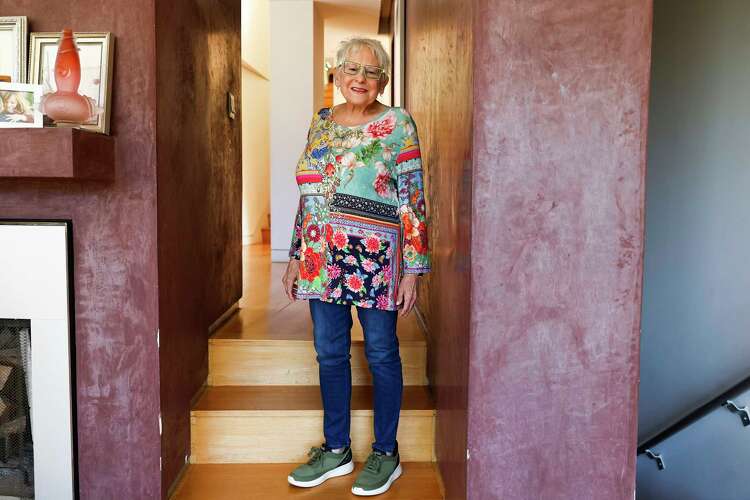A decade ago, the California FAIR Plan was a true insurer of last resort. It insured less than two in every 100 homes in the state. Today, it is one of the largest insurers in California.
New data from the FAIR Plan shows the insurers’ presence is growing faster than ever before, adding nearly 90,000 new policies in the first half of 2025 alone – a sign that California’s insurance crisis remains in full swing, despite tentative signs of progress.
Homeowners on the FAIR Plan describe it as unaffordable and inadequate. A base FAIR Plan policy only covers damage from fire, lightning and explosions, requiring policyholders to pay for a separate, second policy to cover burst pipes, liability and anything else. It also caps overall coverage at $3 million per residential policy – enough for most homes, but not at the high end.
But for more than 591,000 homeowners, condo owners and renters, there is in essence no other choice.
{ “__type”: “devHubFreeformEmbed”, “__id”: “Datawrapper”, “__fallbackImage”: “https://datawrapper.dwcdn.net/qEmJH/mobile.png”, “__data”: { “datawrapper_id”: “qEmJH” } }
“The more we grow, it’s just indicative of a less stable market. It shows that the market is in an unhealthy state right now, because more and more people are coming to the FAIR Plan,” FAIR Plan President Victoria Roach testified to the Assembly Insurance Committee in May.
For Matt Wiser, affording insurance now means deferring repairs on his car and cutting back on the number of trips he makes to the bookstore or to have dinner with his girlfriend.
Wiser was forced on to the FAIR Plan last year when his previous insurer, State Farm General, informed him they wouldn’t renew his policy unless he’d complete a laundry list of wildfire mitigation measures – including tearing down the shed that’s been on the property since Wiser’s great-grandfather owned it. The amount of work was overwhelming and unaffordable, and so Wiser set out to find new insurance.
He learned from local brokers that no private insurer would write new policies in his ZIP code – a swath of Fresno County that stretches from the relatively flat and grassy part of Auberry, where Wiser lives, deep into Sierra National Forest.
Wiser does what he can to reduce his wildfire risk. He regularly mows, weedwhacks and brings in horses and mules to graze grasses that might otherwise fuel a fire. He passes annual inspections from Cal Fire and has a letter from his local fire department testifying to his efforts.
Still, because of the overall high risk in his ZIP code, Wiser said no insurance company will send someone out to recognize the work he does.
“It is incredibly maddening, incredibly frustrating. The people who are making those decisions are city folks in air-conditioned offices, and by and large, they’ve never even been to the areas where they’re making these decisions,” he said. “We are judged by the ZIP code and not individual circumstances.”
Now, Wiser is on the FAIR Plan, alongside 277 others in his ZIP code. Since 2019, the FAIR Plan’s policy count in his ZIP code has more than doubled, now making up an estimated 47% of all insured residences.
{ “__type”: “devHubFreeformEmbed”, “__id”: “Datawrapper”, “__fallbackImage”: “https://datawrapper.dwcdn.net/4ReTf/mobile.png”, “__data”: { “datawrapper_id”: “4ReTf” } }
If Wiser had done all of the work and kept his State Farm policy, his premium still would have risen by about 60%, he said. But now he’s paying about $5,200 a year, 85% higher than he used to, for the FAIR Plan plus a wraparound policy.
Data disclosed by the FAIR Plan earlier this month shows that its policyholders pay anywhere from $91 to more than $20,000 per year, but it’s not the price that weighs the heaviest on Berkeley hills resident Sharon Drager – it’s the coverage limits.
Three decades ago, Drager’s home burned down in the 1991 Oakland Hills fire, a wind-whipped blaze that destroyed more than 3,000 homes and set a record at the time for the deadliest urban wildfire in California.
But through insurance, Drager was eventually able to recover and rebuild.
Both the home that burned and the one she rebuilt were insured by State Farm – at least up until last fall, when she was one of nearly 30,000 customers to be told their insurance would not be renewed due to risk of wildfires and fires following earthquakes. (A State Farm spokesperson said the decision to nonrenew thousands of customers was “not made lightly” and was a necessary step to stabilize the company’s financial condition.)
Drager searched for a replacement, but no private insurer was willing to give a quote for the full value of her home. So she turned to the non-admitted, or surplus line, market – insurance companies that are not subject to California’s pricing regulations. Even when she chose a high deductible, none of the quotes were remotely affordable.
“The numbers were astronomical. One quote was $40,000 a year,” Drager said. “I had to give up. There was nothing available to me that I could afford.”

So Drager wound up on the FAIR Plan, though she fears she is still underinsured.
Over the past few years, as insurers cut back on writing new policies and not renewing existing customers, the FAIR Plan has grown faster and faster. Still, its recent growth doesn’t mean the insurance crisis is still getting worse – it just means it hasn’t yet begun to get better, said David Russell, a professor of insurance at CSU Northridge.
While some of the FAIR Plan’s growth comes from homeowners like Drager and Wiser who were dropped by their insurers, much of it likely reflects people moving, or purchasing a home for the first time, only to find the FAIR Plan is their only option. Many home insurers have restricted where they’ll write new policies, and others – including State Farm and Allstate – have stopped taking on new customers at all.
Once homeowners get on the FAIR Plan, it’s hard to get off – Roach, the insurer’s president, told legislators that in 2023, the average FAIR Plan customer had been with the FAIR Plan for about five-and-a-half years.
New regulations, finalized at the end of last year and slated to take full effect soon, aim to get more private insurers to take up customers like Drager and Wiser.
These reforms alter the way insurance companies are allowed to set their prices, which align California more closely with the rules in other states, but are also expected to lead to increased prices for many homeowners.
In order to use these new regulations, private insurers will have to commit to writing more policies in designated “distressed” areas – counties and ZIP codes where wildfire risk and the share of FAIR Plan policies is high. Those who already write a significant number of high-risk policies will be required to maintain their presence there.
{ “__type”: “devHubFreeformEmbed”, “__id”: “Datawrapper”, “__fallbackImage”: “https://datawrapper.dwcdn.net/HHJGP/mobile.png”, “__data”: { “datawrapper_id”: “HHJGP” } }
Deputy Insurance Commissioner Michael Soller said the department expects insurance companies to submit their first filings under the new reforms this summer. Part of that will include explicitly telling regulators how many more policies they’ll be writing and by when.
Throughout the process, Soller said regulators will be keeping a close eye on whether companies are truly writing more policies and where they’re writing them. Insurance Commissioner Ricardo Lara has said a key measure of success will be seeing people move off from the FAIR Plan. Some insurers have already begun writing more policies in anticipation, Soller added.
Drager is eager for the day a traditional insurer will take her again – but it hasn’t come yet.
Having rebuilt her home after a wildfire once, she’s well aware of how coverage limits that seem high can be quickly eaten up by the costs of debris removal, replacing personal belongings and rebuilding a house from the foundation up – especially in an area like the Berkeley Hills, where construction is expensive.
When she first made the switch to the FAIR Plan, the overwhelming anxiety of being underinsured kept her awake at night. Now she has resigned to it.
“I can’t fight it,” she said. “There was nothing personally I could do. My whole neighborhood is affected by this.”
Reach Megan Fan Munce megan.munce@sfchronicle.com
Sign up for San Francisco Chronicle newsletters here
Read the original article on sfchronicle.com
Related Reading
‘Just plain horrible’: Prolonged Caltrans construction in California resort town has locals fuming
California’s unemployment rate rises to highest in the country as layoffs mount
Over 140 sickened by mystery outbreak on Royal Caribbean cruise out of California
Subscribe
There’s more to San Francisco with the Chronicle. Subscribe today for just 25¢.

